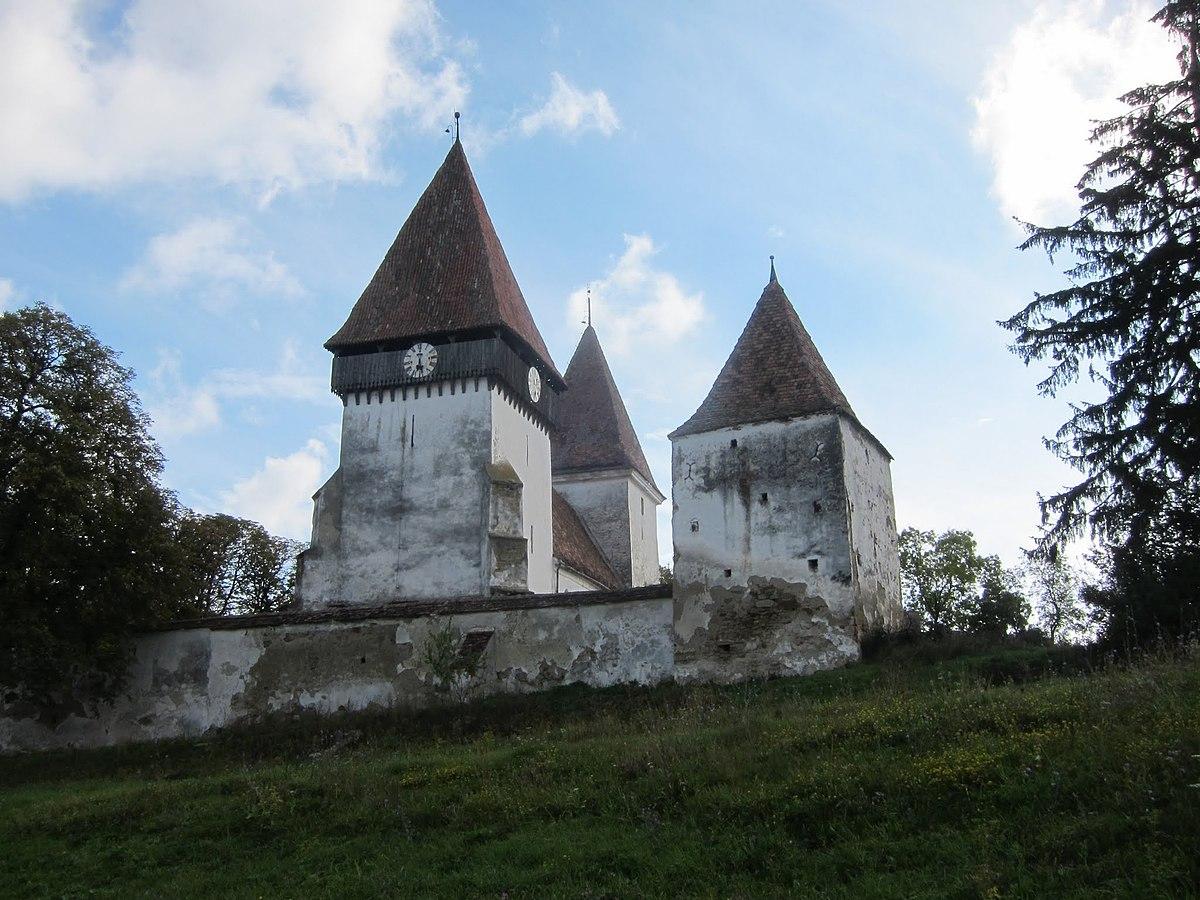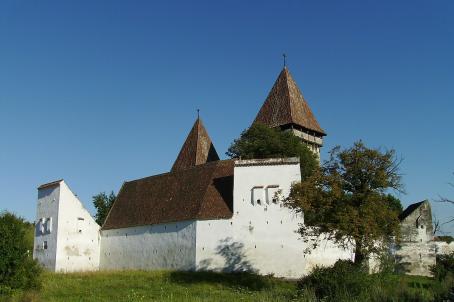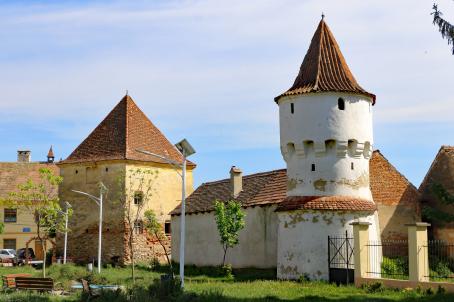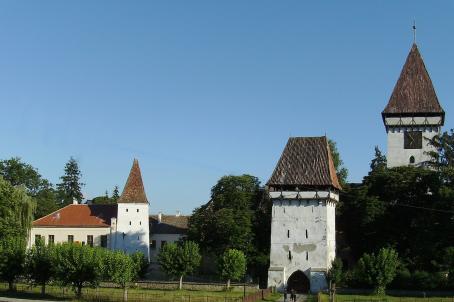Merghindeal Fortified Church

The Romanesque basilica from the 13th century has been largely preserved, as is testified by the connection between nave and side aisles. Two centuries later, during the fortification phase, a tower with later demolished parapet walk was erected above the chancel. The defence level of the western tower and its timber frame parapet walk is still preserved. This type of church with two towers is also found in the neighboring village of Dealu Frumos. The square ring wall with two defense towers had loopholes and parapet walks. From the last one only the insertion holes of the beams are still preserved. The gate tower was once home of the castle guardian.
About this building
For more information visit on this building visit https://kirchenburgen.org/en/location/mergeln-merghindeal/





